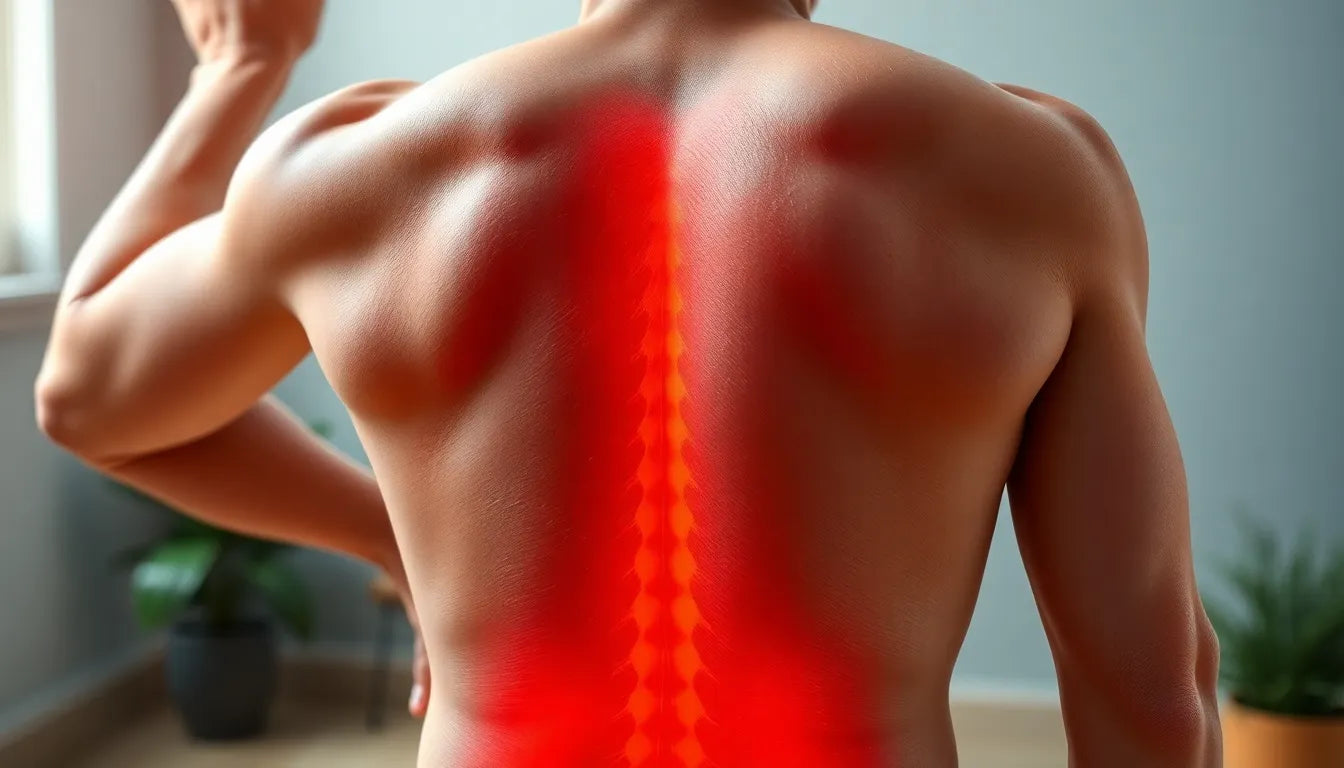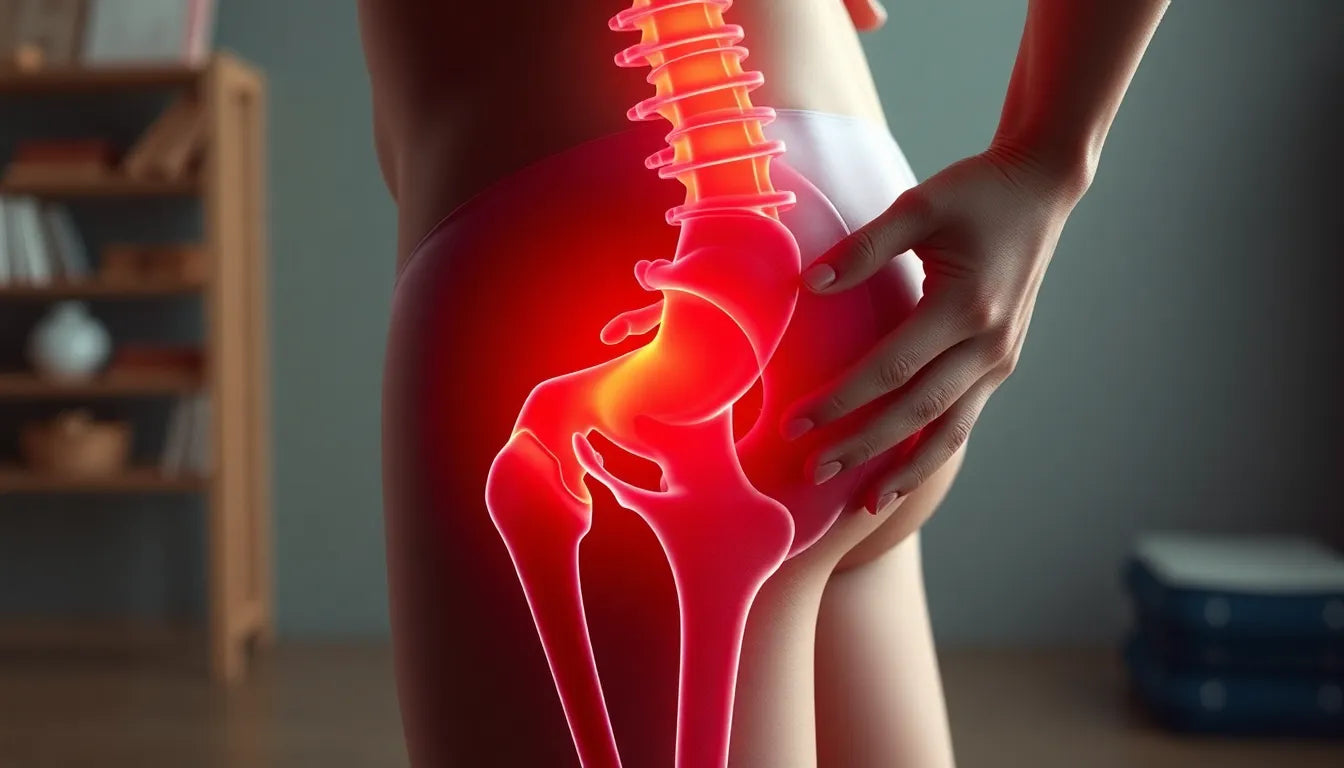Hip and lower back pain are common issues that affect a significant portion of the population, often impacting daily activities and overall quality of life. These types of pain can arise from various causes, including poor posture, muscle imbalances, and a sedentary lifestyle. Such discomfort can hinder mobility and lead to chronic issues if not addressed properly. Understanding the root causes and implementing effective strategies to combat these pains is crucial for maintaining a healthy and active lifestyle.

Lumbar support belt
Provides support and stabilisation for lower back pain with adjustable compression.
One of the most effective ways to manage and alleviate hip and lower back pain is through targeted exercises. These exercises are designed to improve mobility, increase strength, and enhance overall well-being. By focusing on specific muscle groups around the hip and lower back, individuals can work towards reducing pain and preventing future occurrences. Regular exercise not only helps in managing pain but also contributes to better posture and improved physical health.
The role of exercise in pain management
Exercise plays a dual role in managing pain in the hip and lower back areas. It involves a combination of stretching and strengthening exercises that work together to alleviate discomfort. Stretching exercises are essential for improving flexibility and reducing muscle stiffness, which can often contribute to pain. On the other hand, strengthening exercises focus on building supportive muscle structures around the affected areas, providing stability and reducing the risk of injury.
Incorporating a balanced routine that includes both stretching and strengthening exercises can lead to significant improvements in pain management. Stretching helps to elongate muscles and relieve tension, while strengthening exercises build endurance and support for the hips and lower back. This comprehensive approach not only addresses current pain but also helps in preventing future issues by enhancing the body's overall resilience.
Moreover, regular exercise has been shown to have numerous benefits beyond pain relief. It can improve circulation, boost mood, and contribute to better sleep patterns, all of which are crucial for overall health and well-being. By committing to a consistent exercise routine, individuals can take proactive steps towards managing their hip and lower back pain effectively.
In conclusion, understanding the importance of targeted exercises for hip and lower back pain is the first step towards achieving relief and improving quality of life. By focusing on both stretching and strengthening, individuals can create a balanced exercise regimen that addresses pain and promotes long-term health. Whether you are dealing with occasional discomfort or chronic pain, incorporating these exercises into your routine can make a significant difference.
Combining stretching and strengthening exercises for hip and lower back pain
To effectively alleviate hip and lower back pain, a balanced exercise regimen that combines both stretching and strengthening exercises is essential. This approach not only targets the immediate relief of pain but also contributes to long-term stability and prevention of future discomfort. Stretching exercises are crucial for enhancing flexibility and reducing stiffness in the muscles, which can often be the source of pain. Meanwhile, strengthening exercises focus on building muscle support and stability, particularly around the hips and lower back, ensuring these areas are well-supported during daily activities.
Let's delve into a list of recommended exercises that can help in managing and relieving hip and lower back pain:
Lunges
Lunges are a versatile exercise that strengthens the hips and legs while also stretching the hip flexors. To perform a lunge, take a large step forward with your right leg and lower both knees until the back knee almost touches the floor. Focus on feeling the stretch in your hip flexors. Then, alternate legs to ensure balanced strengthening and stretching on both sides. Lunges not only enhance muscle endurance but also improve balance and coordination.
Squats
Squats are excellent for building strength in the hips and lower back. Stand with your feet shoulder-width apart, bend your knees and hips as if sitting back into a chair, and then rise back up. Repeat this movement several times. Squats engage multiple muscle groups, providing comprehensive support to the lower body and contributing to improved posture and reduced strain on the lower back.
Sidelying hip rotations
This exercise enhances mobility and flexibility around the hips. Lie on your back, bend one knee, and let it fall to the side while keeping the heel on the floor. Switch legs after a few repetitions. Sidelying hip rotations help in maintaining joint health and preventing stiffness, which is crucial for pain relief and maintaining a full range of motion.
Glute bridge (bækkenløft)
The glute bridge is a powerful exercise for strengthening hip and lower back stability. Lie on your back with your knees bent and feet flat on the ground. Lift your hips and lower back off the floor, hold briefly, then lower them back down. This exercise targets the gluteal muscles and lower back, providing essential support and reducing the risk of injury.
Stretching exercises
Incorporating stretching exercises such as the "cat-cow stretch" and "ball stretch" can be particularly beneficial for acute lower back pain. These exercises are designed to target stiffness and tension in the lower back and hips, promoting relaxation and flexibility. Following guided video routines can ensure correct form and maximize the benefits of these stretches.
The importance of visual aids and guided instructions
Performing exercises correctly is crucial to avoid injury and ensure maximum benefit. Visual aids, such as instructional videos and detailed guides, can be incredibly helpful in this regard. They provide real-time guidance and demonstrate the correct form and technique for each exercise. By following along with YouTube videos or other visual resources, individuals can gain confidence in their exercise routine and ensure they are performing each movement safely and effectively.
Incorporating these targeted exercises into your routine can significantly improve hip and lower back pain management. By focusing on both stretching and strengthening, you can create a balanced exercise regimen that not only relieves pain but also promotes long-term health and well-being. Remember, consistency is key, and integrating these exercises into your daily life can lead to lasting improvements in mobility, strength, and overall quality of life.

Men's Posture Shirt™ - Black
Posture-improving shirt for men, supports muscle activation and relieves pain and tension.
Holistic treatment approaches for hip and lower back pain
While targeted exercises are essential for managing hip and lower back pain, integrating them with other treatments can enhance their effectiveness. Physiotherapy, chiropractic care, osteopathy, and massage are complementary therapies that can work alongside exercises to provide comprehensive pain relief. These treatments focus on aligning the body, improving movement patterns, and addressing underlying issues that may contribute to discomfort.
Physiotherapy often involves personalized exercise programs tailored to an individual's specific needs, which can be beneficial for those with chronic pain or specific injuries. Chiropractic care and osteopathy focus on the alignment of the spine and joints, which can alleviate pressure and improve function in the hip and lower back areas. Massage therapy can help reduce muscle tension and improve circulation, promoting relaxation and healing.
Preventive measures and ergonomics
In addition to exercises and complementary treatments, preventive measures play a crucial role in managing hip and lower back pain. Ergonomic aids, such as properly adjusted chairs and supportive cushions, can help maintain proper posture and reduce strain on the body during daily activities. Ensuring your workspace is ergonomically friendly can prevent pain from developing or worsening.
Regular movement and breaks from prolonged sitting are also essential. Incorporating short walks or stretching routines into your daily schedule can help maintain flexibility and reduce stiffness. By adopting these preventive measures alongside targeted exercises, individuals can create a supportive environment that fosters long-term health and pain management.
Frequently Asked Questions
What are the best exercises for hip and lower back pain?
A combination of lunges, squats, sidelying hip rotations, glute bridges, and specific stretching exercises are recommended for managing hip and lower back pain. These exercises target key muscle groups, enhancing strength and flexibility.
How often should I perform these exercises?
Aim to perform these exercises at least three times a week. As your comfort and strength improve, you can gradually increase the frequency to further enhance your results and maintain progress.
When should I seek medical advice?
If pain persists or worsens despite regular exercise, it is important to consult a healthcare professional. They can provide a tailored treatment plan that addresses your specific needs and ensures safe and effective pain management.
Can ergonomic products help with pain management?
Yes, ergonomic products can significantly aid in pain management by supporting proper posture and reducing strain on the hips and lower back. Using these aids in conjunction with exercises can enhance their benefits and contribute to overall well-being.
Incorporating these holistic approaches and preventive measures into your routine can lead to improved management of hip and lower back pain. By combining targeted exercises with complementary treatments and ergonomic solutions, individuals can achieve lasting relief and support their overall health and quality of life.
Kilder
- FysioDanmark. ”Ondt i lænden? Øvelser.” FysioDanmark.
- Vores Puls. ”Træn dine hofter smertefri: 6 øvelser der virker.” Vores Puls.
- YouTube. ”Effective Hip and Lower Back Exercises.” YouTube.
- Apuls. ”Træn hofterne: Få 6 effektive øvelser.” Apuls Blog.
- Hospitalsenhed Midt. ”Hofteøvelser ved irriteret slimsæk.” Hospitalsenhed Midt.
- Fysio.dk. ”Ondt i hoften? Her er tre gode øvelser til dig med slidgigt.” Fysio.dk.
- Gigtforeningen. ”Øvelser for hoften.” Gigtforeningen.


















